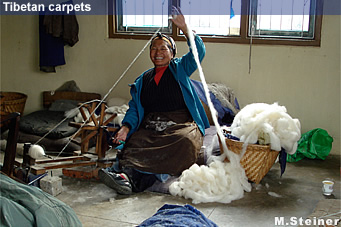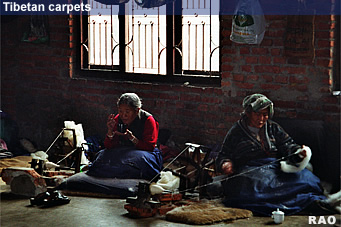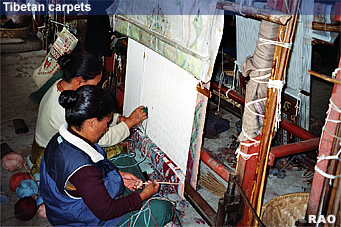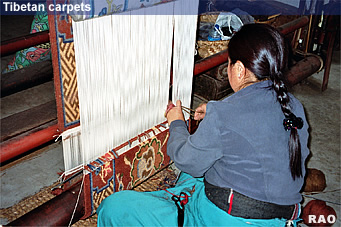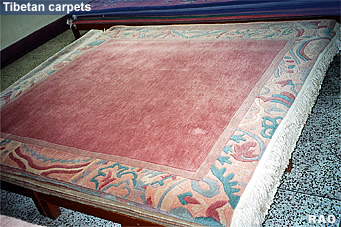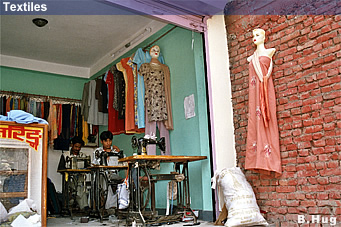 |
|
Weaving |
 |
Especially
in the spring season you will see women in their courtyards making mats
(gundri) from paddy straw. Their technique is as simple as it is efficient:
strings obtained from a strong grass (babiyo) are tied between wooden poles,
and the well-dried straw from the last harvest is woven through those strings
into a dense fabric.
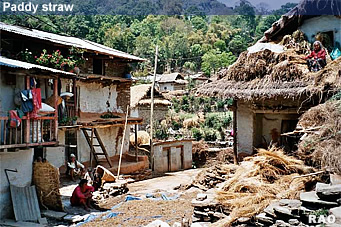 |
| When
staying with a farmer family during your trek you will certainly be offered
these mats as your sitting and sleeping place; only richer families will
a simple woollen carpet will be spread over the gundri. Even then you will,
however, appreciate your sleeping bag as an additional softener of a still
rather hard bedstead !
Since
cotton is not grown in this area, the weaving of cotton yam has only recently
been some what cautiously introduced here. |
|
However,
weaving of sheep wool into radi carpets or the softer bakhu garments is an old trade here and may be observed in many villages along the trails.
The raw sheep wool is mostly purchased from the sheep owners. lt is thoroughly
washed and beaten into a fluffy mass with a bow called dhanu, similar to
cotton-beating which you may have observed in Kathmandu and in the Terai.
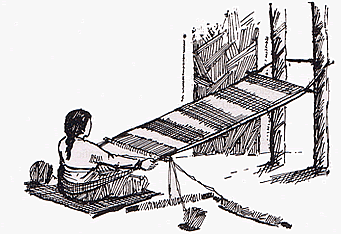 |
weaving
| Next
it is spun with a spinning wheel (charkha) or with the katuwa
spindle described above. The latter instrument allows for spinning
even while wallking.
The
resulting thread is woven op a back-strap loom. For those products
only natural colours (white, black and brown) are used. Dyes (vegetable
or chemical) are used in carpet making. Woven carpets are made in the remote
villages and traded along the road. Knotted Tibetan-carpets have only recently been introduced here. |
|
top
|
Tibetan-carpets |
 |
|





